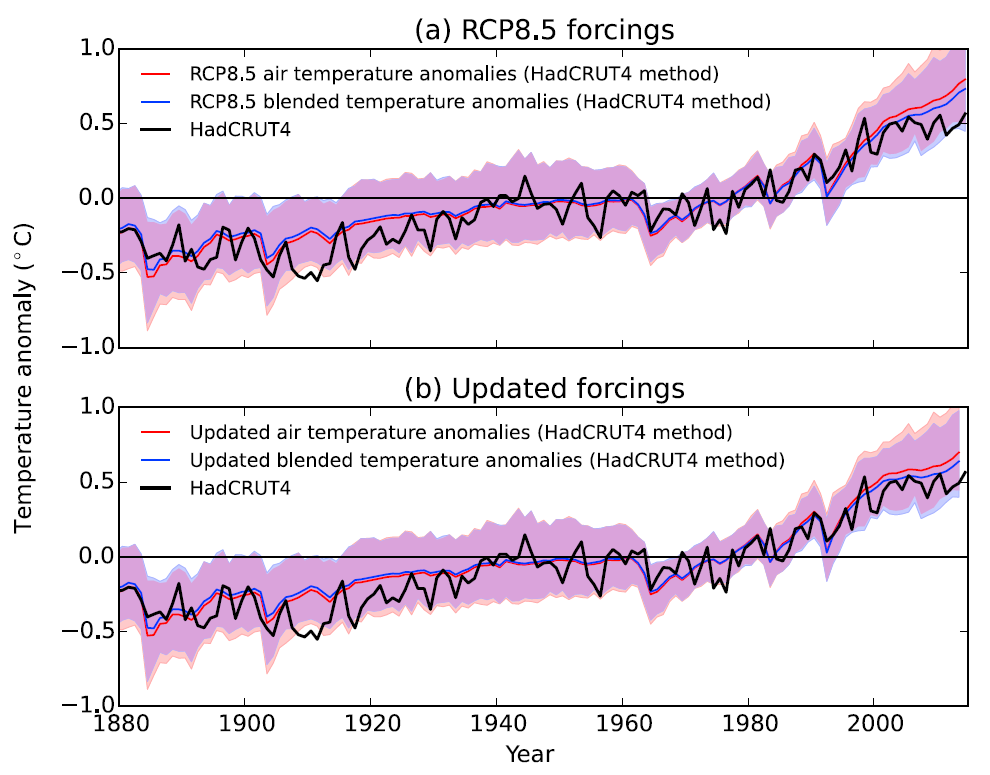Robust comparison of climate models with observations using blended land air and ocean sea surface temperatures

An apples to apples comparison of global temperatures.
When comparing global temperatures estimated from observations with climate model simulations, challenges include issues related to incomplete observational data. Here we quantify the influence of different observational data types.
Usually, global temperatures from climate models use simulated near-surface air temperatures (SATs). However, observations use SATs measured over land, and sea-surface temperatures (SSTs) measured over the ocean and are not spatially complete. The comparison of the global averages of these two different quantities is therefore not like-with-like. This new analysis gets closer to a like-with-like comparison by sampling the models with the same spatial coverage as the observations, and by using the simulated SSTs over the ocean, blended with the SATs over the land. Note that more background, along with the code & data is available for this study.
Because SSTs tend to warm slightly slower than SATs over the ocean, this reduces the warming trend in the simulated estimates of global temperature, bringing them closer to the observations over the past decade. This simple correction accounts for about one third of the difference between the observations and simulations (Figure, top panel). In addition, there have been a few small volcanic eruptions and a reduction in the solar forcing since 2005, which were not included in the CMIP5 simulations. This new analysis applies a correction to the radiative forcings derived by Schmidt et al. (2014) to further improve the like-with-like nature of the comparison (Figure, bottom panel). This adjustment brings the simulations and observations even closer together. Combined, the apparent discrepancy between observations and simulations of global temperature over the past 15 years can be partly explained by the way the comparison is done (about a third), by the incorrect radiative forcings (about a third) and the rest is either due to climate variability or because the models are slightly over sensitive on average. But, the room for the latter effect is now much smaller.

Figure: Comparison of 84 RCP8.5 simulations against HadCRUT4 observations (black), using either air temperatures (red line and shading) or blended temperatures using the HadCRUT4 method (blue line and shading). The shaded regions represent the 90% range (i.e. from 5-95%) of the model simulations, with the corresponding lines representing the multi-model mean. The upper panel shows anomalies derived from the unmodified RCP8.5 results, the lower shows the results adjusted to include the effect of updated forcings from Schmidt et al. (2014). Temperature anomalies are relative to 1961-1990.
Written by Ed Hawkins













